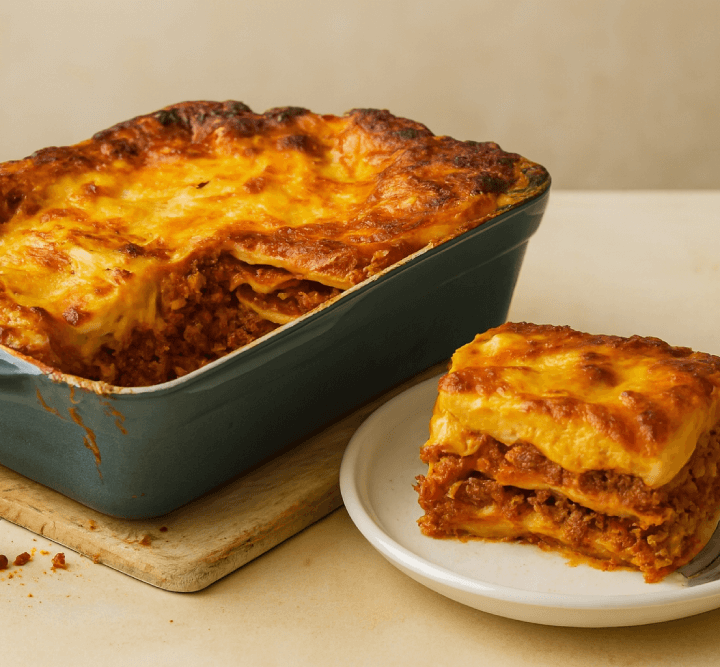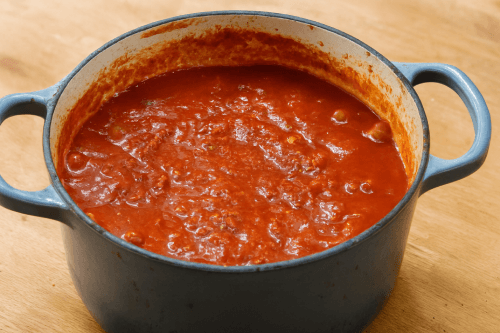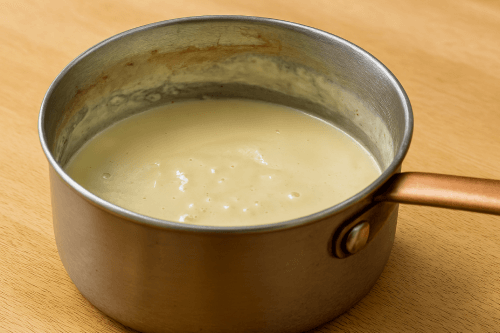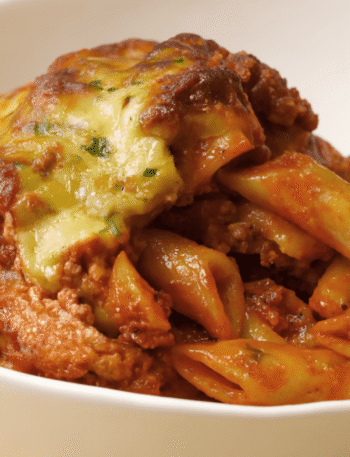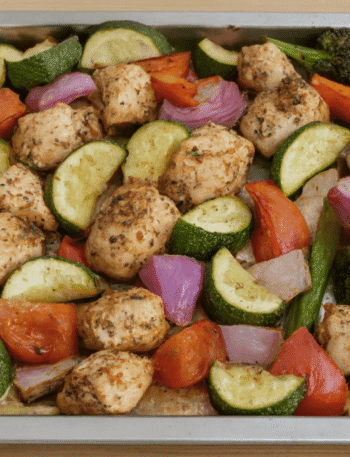If you’ve ever thought about making the perfect lasagna at home, then you should definitely give this Classic Beef Lasagna a try.
It’s that comforting, cheesy, and rich Italian dish that, as you can see, gives a cozy feeling with every bite.
Now, it’s made with slow-cooked beef bolognese sauce, creamy bechamel, and layers of pasta and when all of that comes together, the taste is just something else.
Honestly, people might start asking you for the recipe once they try it.
It does take a bit of time to make, because there are a few steps involved, but believe me, it’s totally worth it in the end.

Classic Beef Lasagna
Description
Classic Beef Lasagna is a rich, cheesy, and hearty Italian dish. It’s made with slow-cooked beef bolognese sauce, creamy bechamel sauce, and soft pasta sheets layered together and as you can see, all of that combines to make the ultimate comfort meal.
Now, whether it’s for a family dinner, a casual get-together, or just a weekend treat, this lasagna fits right in. Every bite is full of cheesy goodness and that authentic Italian flavor that makes it feel special without being complicated.
Ingredients
For Basic Bolognese Sauce:
For Bechamel Sauce:
For Lasagna Assemble:
Instructions
- So first, take a large pan and heat a little olive oil in it. Just enough to coat the bottom. You don’t need a lot, just a light layer.
- Now, once the oil is warm, add in the finely chopped onion, celery, and garlic. Let that cook for about 5 minutes. Stir it around a bit as it cooks, and you’ll see the onion start to soften. That’s when you know it’s ready for the next step.
- Then, add the beef mince. As you add it, break it up with a spoon so it doesn’t clump together. Keep cooking and stirring until the meat turns brown. This part is important because it gives the sauce that rich, hearty base.
- After that, go ahead and add the tomato paste and either stock or red wine, whichever you’re using. Let it come to a boil, and then keep it on the heat for about 5 minutes so the liquid reduces a little and the flavors start to blend.
- Now add the diced tomatoes and tomato passata. Turn the heat down low and let it simmer gently for around 45 minutes. You’ll want to stir it every now and then so it doesn’t stick to the bottom of the pan.

- Now for the bechamel, this is the creamy part that really brings the lasagna together.
- Start by taking a saucepan and adding milk to it. Along with that, toss in a few onion pieces, parsley stalks, peppercorns, cloves, and bay leaves. Heat it gently over low heat. You don’t want it to boil too fast.
- Once it starts to boil, turn off the heat and cover the pan. Let it sit for about 15 minutes so the milk can soak up all those flavors properly.
- Then strain the milk and set it aside. You’ll use it in a bit.
- In another pan, melt some butter. Once it’s melted, add flour and stir it continuously for 1-2 minutes. You’re looking for a light golden color. Not too dark, just enough to cook the flour.
- Now slowly pour in half of the infused milk while whisking. This helps prevent lumps, so take your time and keep whisking.
- Then add the rest of the milk and continue stirring for about 5 minutes until the sauce thickens up nicely.
- Finally, mix in grated Parmesan cheese and season with salt, black pepper, and a little nutmeg. Just enough to add a warm, subtle flavor.

- Alright, now comes the layering part. This is where everything comes together.
- First, preheat your oven to 180°C. While that’s heating up, lightly grease a baking dish with a bit of oil so nothing sticks.
- Start by spreading a thin layer of bechamel sauce at the bottom of the dish. This helps keep the pasta from sticking and adds flavor right from the base.
- Then place a layer of lasagna sheets over the sauce. On top of that, spread a layer of bolognese sauce, followed by another layer of bechamel. Keep repeating this. You’ll want to do about three full layers.
- For the top layer, finish with bechamel sauce and sprinkle mozzarella cheese all over it. Make sure it’s evenly spread so it melts nicely and gives that golden top.
- Now place the dish in the oven and bake for about 40 minutes. You’ll know it’s ready when the top looks golden and bubbly, that’s a good sign everything inside is cooked and the cheese has melted perfectly.
- Once it’s out of the oven, let it cool for at least 15 minutes before cutting. This helps the layers set properly and makes it easier to serve.

Step 1: Making the Basic Bolognese Sauce
Step 2: Making the Bechamel Sauce
Step 3: Assembling the Lasagna
Pro Tips & Variations
Pro Tips:
- So, if you make the Bolognese sauce a day in advance, the flavor actually gets deeper and more developed. Plus, as you can imagine, it makes assembling the lasagna the next day a lot easier.
- Now, the sauce shouldn’t be too thin or too thick, just somewhere in between. Basically, when you drop it from a spoon, it should fall smoothly and coat nicely without being runny or clumpy.
- Once the lasagna comes out of the oven, don’t rush to cut it. Let it sit for about 15-20 minutes. This helps the layers settle properly, and when you slice it, the pieces come out clean and hold their shape better.
- Instead of using only mozzarella, you can mix in a bit of cheddar or parmesan. It adds more depth to the flavor and makes the whole thing taste richer.
- If you can, go for fresh pasta sheets. They give a softer, creamier texture. But if you’re using dry sheets, then it’s a good idea to soak them in warm water for a few minutes before layering. That way, they cook more evenly and don’t stay tough.
Variations:
- Vegetarian version: If you’re not using beef, you can swap it out with a mix of mushrooms, spinach, and zucchini. As you can see, this makes a creamy and satisfying veg lasagna that still feels hearty.
- Spicy twist: Now, if you like a bit of heat, just add some chili flakes to the Bolognese sauce. It gives a nice kick without overpowering the dish.
- Cheese overload version: For the top layer, don’t stop at mozzarella. You can also add a bit of ricotta or cream cheese. As it melts, it creates a dreamy, gooey texture that’s super indulgent.
- Healthy version: If you’re looking for a healthier option, you can use whole wheat or gluten-free pasta sheets instead of regular ones. It’s a small change, but it makes a difference if you’re watching what you eat.
- Mini lasagna cups: Instead of making one big dish, you can use a muffin tray to make small lasagna cups. These look cute when served and are actually perfect for parties or get-togethers. Plus, they’re easier to portion out.
Storage & Reheating Instructions
Storage Instructions:
- So, if you’re planning to eat the lasagna the next day, then just take the leftovers and put them in an airtight container. Keep it in the fridge, and as you can see, it stays good for about 3 to 4 days without any problem.
- Now, let’s say you’ve made a big batch, no worries at all. You can freeze it. Just cut it into portions first, and then store those in airtight containers or ziplock bags. It’ll stay perfectly fine in the freezer for around 2 to 3 months.
- One thing to keep in mind is that always let the lasagna cool down completely before putting it in the fridge or freezer. If you store it while it’s still warm, condensation forms inside the container, and that can make the lasagna soggy later.
- If you’re freezing it, it’s a good idea to label the container with the date. That way, you’ll remember when you made it and won’t end up keeping it too long.
- If you want, you can also make the bolognese and bechamel sauces ahead of time and store them in separate containers. Then later, when you’re ready, just do the layering and bake it fresh.
Reheating Instructions:
- Now, the best way to reheat lasagna is in the oven. Preheat your oven to 180°C, cover the lasagna with foil, and heat it for about 20 to 25 minutes. Covering it helps keep the cheese from drying out, and it also makes sure the inside gets heated properly.
- If you don’t have much time, just take out one slice, place it on a plate, and sprinkle a little water on top. This helps keep the moisture in. Then microwave it for 2 to 3 minutes, that should be enough to warm it through.
- If it’s frozen, you’ll need to thaw it first. The best way is to move it to the fridge and let it thaw for 6 to 8 hours, or just leave it overnight. After that, you can heat it in the oven like usual.
- Try not to overheat it, because if it gets too hot for too long, the cheese can turn rubbery. So it’s better to stick to a medium temperature and keep an eye on it.
- Here’s a small tip. After reheating, sprinkle a bit of extra cheese on top and bake it again for 5 minutes. It gives the lasagna a fresh, just-made feel and makes the top nice and melty again.
Serving Suggestions:
- With a Fresh Salad: Now, since lasagna is a bit of a heavy dish, pairing it with a light green salad really helps balance things out. You don’t need anything fancy, just some lettuce, cherry tomatoes, cucumber, and a little olive oil. It’s simple, fresh, and works well on the side.
- Garlic bread is a must: Then of course, hot and crispy garlic bread just feels necessary with lasagna. Without it, the meal kind of feels incomplete. Dip it into the sauce while eating and as you can imagine, it just doubles the fun.
- Red wine or lemonade: If you drink wine, then red wine goes best with lasagna because it complements the richness of the dish. But if not, a chilled lemonade or even sparkling water works just fine and gives a refreshing contrast.
- Roasted veggies on the side: You can also add a few roasted vegetables like zucchini, bell peppers, or broccoli on the side. It makes the plate look more colorful and adds a healthy touch too.
- A sprinkle of cheese: Right before serving, sprinkle a little parmesan cheese or some chopped parsley on top. It improves the presentation and also adds a bit more flavor. Just a small touch that makes a difference.
How to Serve Smartly:
- Let it rest before serving: Now, once the lasagna is freshly baked, don’t rush to cut it. Let it sit for about 15 minutes. This helps the layers settle properly, and as you can see, it makes slicing much easier and cleaner.
- Cut into square pieces: For a neat presentation, cut the lasagna into square pieces. That way, each plate gets a perfect slice and it looks more organized when served.
- Serving for parties: If you’re having guests over, it’s a good idea to bake the lasagna ahead of time and just reheat it before serving. This way, you’re not stuck in the kitchen and can actually enjoy the gathering.
- For kids: When serving to kids, you might want to add a little extra cheese and skip the spicy version. Kids usually enjoy the cheesy layers more, and keeping it mild makes it easier for them to eat.
- Add a special touch: And finally, just toss a few basil leaves on top before serving. It instantly gives the dish that Italian café kind of vibe. Simple but effective.
Nutrition Facts
Servings 8
Serving Size 1 slice (about 280g)
- Amount Per Serving
- Calories 520kcal
- % Daily Value *
- Total Fat 28g44%
- Saturated Fat 13g65%
- Cholesterol 95mg32%
- Sodium 720mg30%
- Total Carbohydrate 32g11%
- Dietary Fiber 3g12%
- Sugars 8g
- Protein 35g70%
- Vitamin A 950 IU
- Vitamin C 10 mg
- Calcium 280 mg
- Iron 4.5 mg
- Vitamin D 80 IU
* Percent Daily Values are based on a 2,000 calorie diet. Your daily value may be higher or lower depending on your calorie needs.
FAQ
Q1: Can I make lasagna ahead of time?
Yes, absolutely! You can assemble the lasagna a day in advance and keep it in the fridge. Just make sure to cover it properly, and then when you’re ready to serve, bake it in the oven. As you can see, this actually helps the flavors blend even better.
Q2: What’s the best cheese for lasagna?
Mozzarella is a must, no doubt about that. But if you want the taste to be a little more intense and rich, then go ahead and mix in some parmesan and cheddar too. Also, adding a bit of extra mozzarella on top helps create that nice golden crust when it bakes.
Q3: Why does lasagna turn out watery and how can I fix it?
So, if your sauce is too thin or if you didn’t let the lasagna rest after baking, it can end up watery. That’s why it’s important to cook the bolognese sauce until it’s thick, and then after baking, let the lasagna rest for at least 15 minutes. This helps everything set properly.
Q4: Can I use store-bought pasta sheets?
Yes, you can! Just keep in mind that if the sheets are dry, it’s a good idea to soak them in warm water for 5 to 10 minutes before using. This helps them soften up during baking. If you’re using fresh sheets, the texture will turn out even smoother and creamier.
Q5: How long should I let lasagna rest before cutting?
At least 15 to 20 minutes! This gives the cheese some time to set and helps the layers hold together nicely. If you cut it too soon, the filling might spill out everywhere. So just be a little patient, the result is totally worth it.

